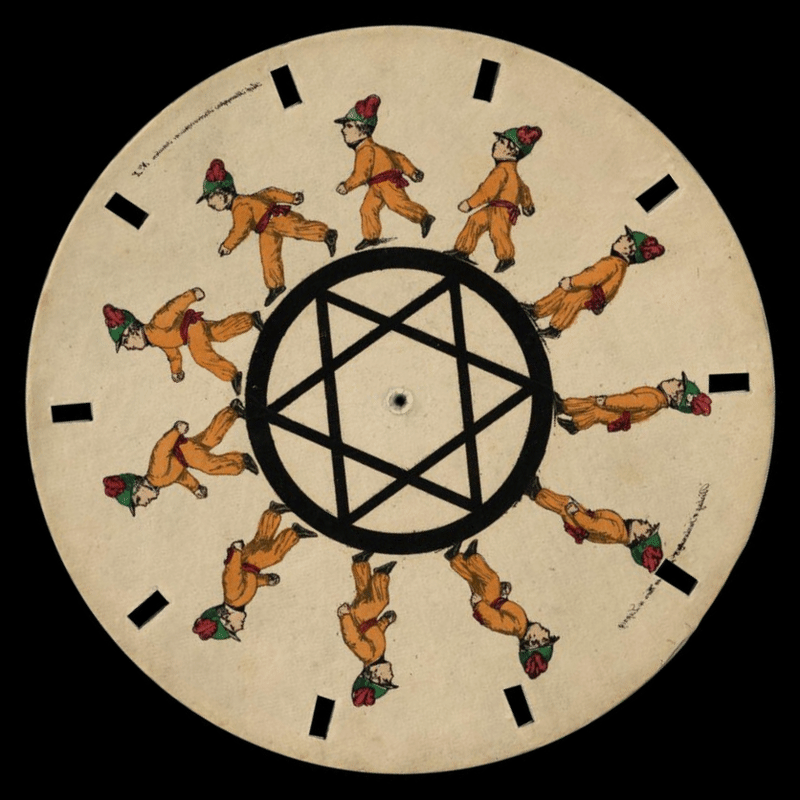|
Deuta
''Deuta'' ( ne, देउता; English: God) is a Nepali film written and directed by Tulsi Ghimire and released in 1991. It starred Rajesh Hamal, Shrawan Ghimire and Srijana Basnet in lead roles. Many consider the performance by Rajesh Hamal was his career best and the movie that made Rajesh Hamal a super star. The film met with extremely positive response from audience for its story, music and performance of Rajesh Hamal but critics crticised its runtime. The movie was a blockbuster hit at the box office. The film was the highest grossing film of the year and one of the highest grossing film of 1990s. The film won Hamal many awards for his performance. The movie remain cult classic and is popular till today esp. Its songs and dialogues of Rajesh Hamal. Hamal stated also stated that Deuta film will always be remembered in his heart, as he recalls the demise of his father while shooting the movie. It was a debut film for the actress Srijana Basnet. The movie had celebrated 51 day ... [...More Info...] [...Related Items...] OR: [Wikipedia] [Google] [Baidu] |
Rajesh Hamal
Rajesh Hamal ( , born September 6, 1964) is a Nepali film actor (MAHANAYAK). He is regarded as one of the most influential and popular actors in the history of Nepalese cinema. He is popularly known as the "Maha Nayak"(megastar)of the Nepalese film Industry for being the highest-paid Nepali actor throughout the 1990s and early 2000s. He is the first Nepalese actor to receive popularity across South Asia, holding several box office records in Nepali cinema, including the most commercially successful film as lead actor, most consecutive hits, and most awards as an actor. Hamal debuted as an actor in his uncle's film ''Yug Dekhi Yug Samma'' in 1988, which was a huge hit and made him a nationwide star. But the 1991 Blockbuster ''Deuta'' marked a turning point in his career and launched Hamal to superstar status. Since then, he has appeared in over 200 films in a career spanning nearly three decades. He is widely regarded as one of the most influential personalities in Nepali cinema ... [...More Info...] [...Related Items...] OR: [Wikipedia] [Google] [Baidu] |
Tulsi Ghimire
Tulsi Ghimire is an Indian film director, screenwriter, Film editing, film editor, Camera operator, cameraman, actor and lyricist known for his works in Cinema of Nepal, Nepali films. Regarded as one of the greatest filmmakers of Nepali cinema, he is known for his romantic and masala film that dealt with social issues of Nepali society, portrayal of deep human emotions and masala films. He has directed some of the iconic Nepali films like Kusume Rumal, Deuta, Laure, Chino, Dakshina, Balidan and Darpan Chaya. Majority of his movies in 1990s were blockbusters and two of the movies Kusume Rumal and Darpan Chhaya, Darpan Chaya went on to become the highest grossing Nepali film of all time. Personal life Tulsi Ghimire was born in Sindeybong, Kalimpong, Darjeeling district, India to Nepali parents Dhojman Ghimire and Narbada Ghimire. He has two younger brothers and a sister. Ghimire studied at the Mani Memorial Primary School in Sindeybong up to second grade, and then from grade 3 to ... [...More Info...] [...Related Items...] OR: [Wikipedia] [Google] [Baidu] |
Ranjit Gazmer
Ranjit Gazmer is an Indian film music director and a musician, who is noted for his work in Nepali-language films. He had a long association with music director R.D. Burman as a musician. Early life Ranjit Gazmer is from a gold merchant family of Darjeeling, West Bengal. Gazmer was a student of Amber Gurung at his Art Academy of Music in Darjeeling. His contemporaries were Gopal Yonzon, Karma Yonzon, Sharan Pradhan, Aruna Lama and Jitendra Bardewa, all of whom went on to be musicians. He was a part of a musical group called 'Sangam Club' and was also a drummer for 'The Hillians', the first-ever western band formed in Darjeeling. In 1966, he moved to Birgunj, Nepal with his friends, which included Anuradha Koirala (then Anuradha Gurung), managing an English-medium private school. In 1967, Gazmer moved to Kathmandu with his friends and became a studio musician at Radio Nepal. Later, he moved to Mumbai (then Bombay) to pursue his music career there with R.D. Burman. Care ... [...More Info...] [...Related Items...] OR: [Wikipedia] [Google] [Baidu] |
Shrawan Ghimire
Shrawan Ghimire ( ne, श्रवण घिमिरे) is an Indian actor and film producer associated with Nepali language films. Ghimire has been involved in many commercially successful films including '' Lahure'', ''Dui Thopa Aansu'' and '' Darpan Chaya''. He and his brother Tulsi Ghimire's pair is regarded as the most successful and qualitative producer−director pair. his son's name is siddhartha ghimire. Filmography Ghimire has been cast in movies such as: See also *Cinema of Nepal Nepali Cinema, also referred to as "''Nepali Chalachitra''" ( ne, नेपाली चलचित्र) in Nepali, is the filmmaking industry in Nepal. This includes films in various languages of Nepal, most notably in Nepali, Maithili and B ... References Living people Year of birth missing (living people) Place of birth missing (living people) Actors from Kathmandu Nepalese film producers 20th-century Nepalese male actors 21st-century Nepalese male actors Khas peop ... [...More Info...] [...Related Items...] OR: [Wikipedia] [Google] [Baidu] |
Raju Shah
Raju Shah ( ne, राजु शाह; born 26 February 1965 A.D) is a Nepalese Choreographer, Director, Producer. He is a nationally renowned choreographer and film director. Shah is also founder chairman of Nepal Film Dance Association and Film Dance Choreographer Association, Nepal. He started his film career as a dancer of Nepali features film Badalindo Aakash in 1982 and later started working as a choreographer from 1992 A.D in Nepali feature film A film also called a movie, motion picture, moving picture, picture, photoplay or (slang) flick is a work of visual art that simulates experiences and otherwise communicates ideas, stories, perceptions, feelings, beauty, or atmosphere ... Dui Thopa Aansu. Shah has directed more than 200 Nepali films as choreographer. He has also directed two feature film, "Sapanako Naulo Sansar" and "Namaste Nepal". Namaste Nepal is one of the first Nepali feature film which was fully picturised in Europe. Awards References ... [...More Info...] [...Related Items...] OR: [Wikipedia] [Google] [Baidu] |
Sadhana Sargam
Sadhana Sargam (née Ghanekar, born 7 March 1969) is an Indian singer known for her playback career in Indian cinema predominantly in Hindi, Bengali, Telugu and Tamil language films. She is a recipient of the National Film Award and Filmfare Awards South. She has also won five Maharashtra State Film Awards, four Gujarat State Film Awards, and one Orissa State Film. Early life Sargam was born to a family of musicians at Dabhol, the seaport town in Ratnagiri District of Maharashtra. Her mother Neela Ghanekar was a classical singer and music teacher and knew arranger–composer Anil Mohile, who then arranged music for Kalyanji-Anandji. He introduced Sargam to them, and she was in the children's chorus in "Pam Pararampam, Bole Jeevan Ki Sargam" sung by Kishore Kumar in G. P. Sippy's '' Trishna'' (1978). Sargam performed at music festival Sawai Gandharva at the age of 4. She sang the popular song Ek Anek Aur Ekta for Doordarshan at the age 6. The song was composed by Vasant ... [...More Info...] [...Related Items...] OR: [Wikipedia] [Google] [Baidu] |
Films Shot In Kathmandu
A film also called a movie, motion picture, moving picture, picture, photoplay or (slang) flick is a work of visual art that simulates experiences and otherwise communicates ideas, stories, perceptions, feelings, beauty, or atmosphere through the use of moving images. These images are generally accompanied by sound and, more rarely, other sensory stimulations. The word "cinema", short for cinematography, is often used to refer to filmmaking and the film industry, and to the art form that is the result of it. Recording and transmission of film The moving images of a film are created by photographing actual scenes with a motion-picture camera, by photographing drawings or miniature models using traditional animation techniques, by means of CGI and computer animation, or by a combination of some or all of these techniques, and other visual effects. Before the introduction of digital production, series of still images were recorded on a strip of chemically sens ... [...More Info...] [...Related Items...] OR: [Wikipedia] [Google] [Baidu] |
Nepalese Action Films
Nepali or Nepalese may refer to : Concerning Nepal * Anything of, from, or related to Nepal * Nepali people, citizens of Nepal * Nepali language, an Indo-Aryan language found in Nepal, the current official national language and a language spoken in India * Nepal Bhasa, a Sino-Tibetan language found in Nepal, formerly the official national language * Nepalese literature * Nepalese cuisine * Nepalese culture * Nepali cinema * Nepali music Other uses * ''Nepali'' (film), a 2008 Indian Tamil-language film See also * Nepal (other) * * * Languages of Nepal * Nepal Nepal (; ne, नेपाल ), formerly the Federal Democratic Republic of Nepal ( ne, सङ्घीय लोकतान्त्रिक गणतन्त्र नेपाल ), is a landlocked country in South Asia. It is ma ... is a south Asian country with a population of nearly 30 million. {{disambiguation Language and nationality disambiguation pages ... [...More Info...] [...Related Items...] OR: [Wikipedia] [Google] [Baidu] |
Films Directed By Tulsi Ghimire
A film also called a movie, motion picture, moving picture, picture, photoplay or (slang) flick is a work of visual art that simulates experiences and otherwise communicates ideas, stories, perceptions, feelings, beauty, or atmosphere through the use of moving images. These images are generally accompanied by sound and, more rarely, other sensory stimulations. The word "cinema", short for cinematography, is often used to refer to filmmaking and the film industry, and to the art form that is the result of it. Recording and transmission of film The moving images of a film are created by photographing actual scenes with a motion-picture camera, by photographing drawings or miniature models using traditional animation techniques, by means of CGI and computer animation, or by a combination of some or all of these techniques, and other visual effects. Before the introduction of digital production, series of still images were recorded on a strip of chemically sens ... [...More Info...] [...Related Items...] OR: [Wikipedia] [Google] [Baidu] |

